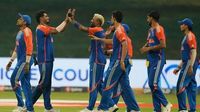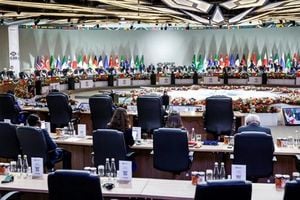The Indian cricket landscape is buzzing with anticipation as the Board of Control for Cricket in India (BCCI) sets the stage for a defining period ahead of the ICC T20 World Cup 2026. With the marquee tournament scheduled to kick off in February 2026—hosted jointly by India and Sri Lanka—the national selectors, led by Ajit Agarkar, are making bold moves to ensure Team India enters the global event with unwavering confidence and a settled squad.
In a move that’s sparking plenty of conversation among fans and pundits alike, the BCCI has all but confirmed that the squad chosen for the upcoming five-match T20I series against New Zealand will serve as the core group for the World Cup. This decision comes as part of a broader strategy to maintain continuity, build team chemistry, and avoid last-minute disruptions—a lesson learned the hard way during previous tournaments.
The T20I series against New Zealand, slated to begin on January 21, 2026, is being dubbed a “dress rehearsal” for the World Cup. Matches are set to be played across five vibrant venues: Nagpur (January 21), Raipur (January 23), Guwahati (January 25), Visakhapatnam (January 28), and Thiruvananthapuram (January 31). With only ten T20Is remaining before the World Cup—five against South Africa and five against New Zealand—the selectors are determined to minimize changes and let the team settle into a rhythm.
“With only 10 T20Is left before the T20 World Cup, you won’t see many changes happening in the squad proper unless someone is ruled out due to any specific injury,” a source privy to the developments told PTI under the condition of anonymity. “One of the biggest reasons being continuity, and the 15 chosen for the series against the Black Caps won’t be tinkered with because of the short turnaround time.”
This approach marks a significant departure from the sometimes chaotic selection processes of the past. The memory of the Champions Trophy earlier this year, where Yashasvi Jaiswal was initially picked but replaced at the last minute by Varun Chakravarthy, still lingers. That late switch, driven by tactical needs and conditions in Dubai, led to confusion and criticism. Determined not to repeat such scenarios, the selection committee is placing a premium on stability and transparency.
For head coach Gautam Gambhir and captain Suryakumar Yadav, the recent T20I series against South Africa served as the final opportunity to experiment with player combinations and assess fringe candidates. Now, as the New Zealand series looms, the window for experimentation is all but closed. The focus is squarely on fine-tuning strategies, solidifying roles, and ensuring every member of the squad is battle-ready for the World Cup challenge ahead.
This philosophy of continuity has already paid dividends for India. The Men in Blue clinched the 2024 T20 World Cup under Rohit Sharma’s captaincy, ending a 17-year drought, and followed it up with a Champions Trophy win in 2025—breaking a 12-year spell without that particular silverware. Both triumphs were built on a foundation of trust, stability, and a clear vision from the selectors and team management. Now, with Gambhir at the helm, India’s T20 side has looked sharper and more cohesive than ever.
Recent results have only bolstered confidence in this approach. India’s 2-1 T20I series win against Australia on their turf showcased the depth and resilience of the current squad. Most of the players who featured in that series are expected to be retained for both the New Zealand series and the World Cup, further underlining the selectors’ commitment to consistency.
The stakes, of course, couldn’t be higher. The ICC has mandated that all participating nations submit their final 15-member squads a month before the World Cup’s tentative start date of February 7, 2026. While teams have the option to make changes up until a specified cut-off date, the BCCI’s stance is clear: barring injuries, the core squad will remain untouched. This approach is designed to foster a sense of security and clarity among players, allowing them to focus solely on performance rather than selection uncertainties.
“The selection panel might not want to tinker with the named squad at a later date like it was forced to take that route during the Champions Trophy in Dubai earlier this year,” another source explained. “The original Champions Trophy squad had Yashasvi Jaiswal in it, but looking at the conditions in Dubai and the need for a mystery spinner, Varun Chakravarthy made way during the preceding series against England. Jaiswal was eventually dropped after being picked in the initial 15, a precedent that didn’t seem encouraging.”
Looking ahead, the New Zealand series is not just about honing skills or testing tactical plans—it’s about cementing the team’s identity and building momentum for the biggest stage in T20 cricket. The selectors’ reluctance to make unnecessary changes is also informed by the short turnaround time between the end of the New Zealand series and the World Cup. With little room for error, the emphasis is on cohesion and collective belief.
India’s group for the T20 World Cup, as per early reports, promises plenty of fireworks. The Men in Blue are likely to be slotted alongside arch-rivals Pakistan, as well as the USA, Netherlands, and Namibia. Every match in this group will carry immense significance, not just for qualification but also for national pride and the ever-intense India-Pakistan rivalry.
As the countdown to the New Zealand T20I series begins, fans across the country are eager to see how the chosen squad shapes up. Will the selectors’ gamble on stability pay off once more? Can India maintain their winning momentum under Gambhir’s astute leadership? One thing’s for sure—every ball bowled and every run scored in the coming weeks will be scrutinized through the lens of World Cup readiness.
With the stage set and the stakes higher than ever, Indian cricket is entering a critical phase. The selectors’ decision to prioritize continuity over experimentation sends a powerful message: the road to World Cup glory starts now, and there’s no turning back. As the Men in Blue gear up for their final dress rehearsal against New Zealand, the nation’s hopes—and expectations—are riding high.




